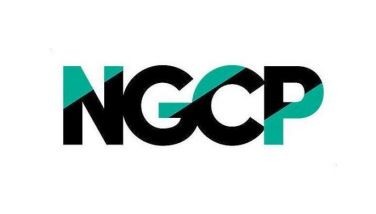Philippines? Where’s that?

Often, we think the world revolves around us. Our politicians talk as if what they say matters to the rest of the world and the world will adjust to their whims.
I have been thinking about our ineffective advertising campaigns for our tourism sector through the years. It seems we have consistently assumed we just have to tell them they should come and they will. We overwhelm them with postcard pretty pictures, host Miss Universe and expect tourists will come in droves.
In the first place, very few of our target markets actually see our advertising because we don’t have the money to finance an ad campaign with enough frequency of exposure to matter. And the little money we have, we waste by changing our message every time an administration changes.
Or we make bad choices to spend money on stuff like Miss Universe. As advertising properties go, Miss Universe has lost its allure when audience numbers are crunched.
And contrary to claims that taxpayer money will not be used, I am told there was a P10 million disbursement from DOT to the organizer of Ms. Universe. The P10 million sponsorship was approved by Sec. Teo in December but was processed and released after the Ms. Universe event. That’s on top of out-of-pocket expenses as well as cost of security.
Anyway, our advertising campaigns assume that most people know about the Philippines. Yet, even in the United States, most people there haven’t heard of the Philippines. People, even those you think should know better, are geographically challenged.
Maybe because we now have a pretty good number of Filipinos working abroad, the awareness level has improved. But that doesn’t mean people in the big tourism markets, other than China, are willing to go halfway around the globe to visit.
But, you might say, they are going to Thailand already. We are just another three hours away. Maybe it is because Thailand has better infrastructure… or maybe Thailand had been able to present a better story for a visit than we have. Thailand has been able to use their culture as a big come-on. What’s our compelling story?
It is probably easier to produce a compelling story about Coron, Tubbataha, Boracay, Sagada, Vigan and Batanes individually, than it is for a general campaign for the Philippines. Each location gives a potential tourist a specific idea of what it is and what can be expected.
That’s why Cebu’s Island in the Pacific campaign was successful. It talked only about Cebu and not a word about the Philippines which had a bad image at that time. It was focused and promised specific experiences.
Let us face it. The Philippines has suffered bad international publicity lately. Manila, in particular, was visualized in major world newspapers and newscasts as dirty, chaotic and deadly. Those dramatic award winning photographs of drug raid victims with blood spilled on the street are hard to get out of one’s mind.
Now, there’s Marawi and ISIS. We can’t expect people abroad to know where in the Philippines Marawi is. They have been told Marawi is in the Philippines and having seen all the violence on television, they can be forgiven for not wanting to come here.
Our traditional generic tourism advertising offers a smorgasbord of choices. But most tourists have limited vacation time and can visit only one or at most two places, one of which will be one of our neighbors where their long haul flight landed. Perhaps, more focused campaigns on particular destinations that we know will score big with visitors will be better.
In that sense, the More Fun in the Philippines campaign of MonJ using those iconic London and New York buses featuring just one site at a time is perhaps the way to go. Because our funds are limited, we need to choose our champions… no more than one or two at a time.
Maybe by focusing on a few, we can also focus our resources for infrastructure development on these sites and be able to implement rules more strictly that will make tourism in the area sustainable. Let the private sector investors in tourism carry their share of the promotions budget. Let the Ayalas promote El Nido. Let Ongpin promote Balesin.
There will most likely be less arguments on the creative approach for promoting the sites. Just letting a drone take good pictures of Coron or Batanes already makes for a compelling reason to visit. The pictures should tell it all.
Ever wonder why Maldives is popular? All they have is water and we have that too and better. Their government is as dysfunctional as ours, yet they still attract visitors.
We tell the nature story first. Maybe later, we can tell the culture story. But telling the culture story can be tricky. Tourists are tired of watching cultural minorities in colorful native dress banging on pans.
Creativity and sensitivity in presenting our culture to visitors are required and that’s not easy. That’s why at the start, presenting our unique natural grandeur should be the way to go. For culture, go for experiential… Sinulog and Dinagyang are festivals that invite crowd participation like the Mardi Gras in Brazil.
In other words, let us not assume our markets know where in the world the Philippines is. Then let us tell them a compelling story for a visit. And for a place so far from their world, we are likely to attract the more adventurous ones, so let us not disappoint.
Finally, we have to make sure they are safe. Word gets around in travel blogs when taxi drivers swindle tourists on the ride from NAIA to their hotels.
Face palm moment
A reader sent this e-mail after reading a previous column on the subject of tourism and the tourism department.
I read your recent column and I would like to affirm your observations, particularly on the capabilities of Wanda Teo.
Last week, I attended the International Conference on Tourism Statistics which focused on measuring sustainable tourism. It was organized by the UNWTO in cooperation with the DOT and was held at the Marriott Hotel in Pasay City. I was there as a delegate representing the private sector.
During the ministerial roundtable that was participated by ministers and top tourism execs from other countries, Ms. Teo was obviously not prepared or even knowledgeable with the topic.
The roundtable’s moderator, the esteemed Anita Mendiratta (special advisor to the secretary general of UNWTO) curiously asked Ms. Teo about how the Philippines, with 7,000+ islands, measures sustainable tourism.
Our tourism secretary, whose body language obviously showed a lack of interest in joining the high-level discussion, responded that it is difficult to measure and she’d rather look at the jobs created. When everyone else was discussing actual results, methodologies and interesting concepts on measuring sustainable tourism, here’s our very own secretary telling the international audience that in the perspective of the Philippines it is difficult to measure.
She had another chance to speak when the moderator asked everyone the importance of sustainable tourism. Her response sounded like something taken from a beauty pageant – that sustainable tourism is for the future generation.
I thought it was only me who cringed every time the microphone was given to her. When I had the chance to talk to fellow Filipinos, I realized everyone felt the same.
During the conference’s closing ceremonies, I felt justice was served when it was career Usec. Benito Bengzon Jr. who gave one of the closing remarks.
Boo Chanco’s e-mail address is [email protected]. Follow him on Twitter @boochanco
- Latest
- Trending
























